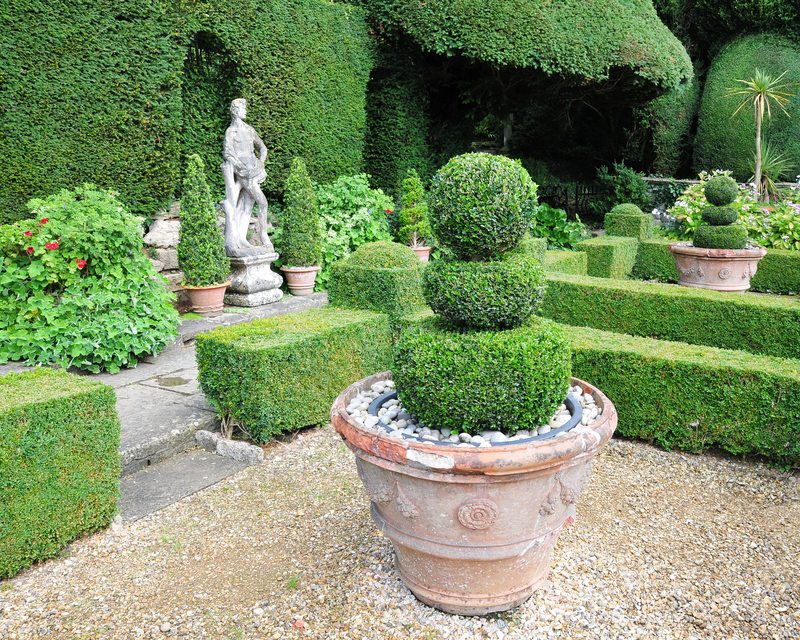Ensuring your orchids' vibrant, lasting life
Posted on 28/08/2025
Ensuring Your Orchids' Vibrant, Lasting Life: A Comprehensive Guide
Orchids are among the most enchanting and diverse houseplants, captivating enthusiasts with their intricate blooms and exotic allure. However, maintaining orchids' vibrant, lasting life requires a nuanced approach, as these beautiful plants come with unique needs and preferences. This extensive guide will walk you through essential care tips and advanced techniques to help your orchids not only survive but truly thrive for years to come.

Understanding Orchids: A World of Beauty and Variety
There are over 25,000 species of orchids worldwide, making them one of the largest and most diverse plant families. From the ever-popular Phalaenopsis (Moth Orchid) and Cattleya, to the fragrant Oncidium and exotic Vanda, each genus brings its own set of care requirements that, if met with diligence, can result in a vibrant, lasting display for years.
Why Invest in Your Orchid's Longevity? With proper care, orchids can live for decades, frequently re-blooming and becoming statement pieces in your home or greenhouse. Their longevity and vibrant life depend on a proper understanding of their needs, responsive care practices, and a bit of patience.
The Essence of Orchid Longevity: Key Care Factors
- Light
- Watering
- Humidity
- Temperature
- Fertilizing
- Air Flow
- Pest and Disease Management
- Potting Medium and Repotting
Let's break down each essential care factor contributing to your orchid's vibrant and lasting life.
Providing Optimal Light for Orchid Vitality
Ensuring your orchids receive the right amount of light is crucial. Orchids generally prefer bright, indirect sunlight, but the precise requirements vary by species:
- Phalaenopsis orchids: Moderate light; ideal in east or west-facing windows
- Cattleya and Vanda orchids: Brighter conditions, south-facing windows with filtered light
- Paphiopedilum: Lower light, making them suitable for north-facing sills
Signs of too much light include yellowing leaves or scorched patches, while too little light results in dark green foliage and a lack of blooms. Rotate your orchid regularly to ensure even light exposure, promoting symmetrical and vigorous growth.
Supplementing Natural Light
If your home lacks natural light, LED grow lights can help maintain your orchid's vibrant life year-round. Choose full-spectrum lights and keep them on for about 12-14 hours daily to simulate natural daylight, ensuring your orchid continues its vital processes.
Watering Wisdom: Hydration for Healthy Orchids
Improper watering is one of the leading causes of orchid decline. Here's how to get it right:
- Frequency: Most orchids, especially Phalaenopsis, prefer complete drying of the media between waterings. Typically, water every 7-10 days, but always check substrate dryness first.
- Method: Use tepid, distilled, or rainwater. Avoid excess minerals found in tap water, which can damage roots over time.
- Technique: Soak the roots thoroughly, then allow all excess water to drain completely to prevent root rot--a critical step in ensuring your orchid's lasting life.
Warning Signs: Wrinkled or mushy roots signal overwatering, while withered, papery roots indicate underwatering. Adjust your routine based on these cues, and always remember: when in doubt, less is more when it comes to watering orchids.
Achieving Proper Humidity Levels
Orchids originate from humid environments, so replicating these conditions is vital. Optimal humidity for vibrant orchids ranges from 50-70%.
- Use humidity trays filled with water and pebbles beneath your orchid pots, ensuring the pots themselves are above the waterline.
- Mist your orchids in the morning to prevent overnight leaf dampness.
- Group orchids together to create a microclimate of higher humidity.
- Utilize a room humidifier during dry seasons or winter months.
If you notice puckered leaves or brittle flower stems, consider increasing humidity to encourage a longer, more vibrant orchid life.
Temperature: Balancing Day and Night for Thriving Orchids
Temperature control is another pillar in ensuring orchid longevity. Orchids enjoy a diurnal temperature difference--warmer days and cooler nights--which triggers robust growth and abundant blooms.
- Daytime: Most common species prefer 65-80?F (18-27?C)
- Nighttime: 55-65?F (13-18?C)
This day-night difference is essential for initiating flower spikes. Avoid sudden drafts or placement near radiators and vents, which can stress these delicate plants and shorten their lifespan.
Smart Fertilizing: Nourishing for the Long Haul
Proper feeding is essential for a lasting, vibrant orchid life. Since orchids are epiphytes, growing on trees in nutrient-poor environments, they require regular but light fertilization:
- Use a specialized orchid fertilizer (typically 20-20-20) diluted to half or quarter strength.
- Feed every two weeks during active growth (spring and summer); reduce to monthly during dormancy (fall and winter).
- Flush pots with plain water once a month to prevent salt build-up, which can be toxic to tender roots.
Avoid overfertilizing--too much can stunt growth, burn roots, or inhibit blooming, ultimately shortening your orchid's thriving life.
Air Flow and Ventilation: The Silent Saviors
Good air movement is often overlooked, but it's indispensable for vibrant, lasting orchids. It helps prevent fungal and bacterial diseases, especially in humid environments.
- Place your orchids in areas with gentle, indirect air flow.
- A small, oscillating fan can be used in stuffier rooms or during humid spells.
- Avoid direct, strong drafts--orchids are sensitive to sudden environmental changes.
Healthy air circulation mimics natural conditions and contributes hugely to your orchid's ongoing vitality and defense against common maladies.
Choosing the Right Potting Mix and Repotting Orchids
Unlike typical houseplants, orchids do not grow in soil. The correct potting mix is crucial for sustaining a truly long and healthy orchid life. Choose mixes composed of:
- Bark chips (fir, pine, or redwood)
- Sphagnum moss
- Perlite
- Coconut coir
- Charcoal (to absorb toxins)
Each orchid species prefers a particular substrate. For example, Phalaenopsis orchids flourish in bark, while Cymbidiums like coarser, free-draining mixtures. Every 1-2 years, or when media breaks down, repot your orchid to prevent root suffocation and rot. Repot after flowering to avoid shocking the plant during a critical bud-producing phase.
Pest and Disease Management: Defending Orchid Health
The secret to ensuring your orchid's vibrant and lasting life is prompt pest and disease control. Typical orchid pests include:
- Aphids, scale insects, and mealybugs--removed with insecticidal soap or isopropyl alcohol swabs
- Spider mites--require increased humidity and repeated wiping
- Fungal and bacterial rots--triggered by overwatering or poor air flow
Inspect plants weekly and address any symptoms promptly. For fungal infections, remove affected tissue and apply a fungicide suitable for orchids. A clean, well-ventilated environment is your best preventative measure.
Advanced Orchid Care Tips for Long-lasting Vigor
Encouraging Reliable Reblooming
Continuous, spectacular blooms are the ultimate goal, but stimulating reblooming requires some specific strategies:
- Ensure seasonal temperature drops at night (about 10-15?F lower)
- Maintain moderate, not excessive, fertilizer levels
- After blooming, cut the flower spike just above a visible node to encourage new spike production (mainly for Phalaenopsis)
Propagation for Perpetual Orchid Life
Creating new orchids from your favorites extends their vibrant legacy. Methods include:
- Keiki (baby plant) growth--commonly seen in Phalaenopsis and Dendrobiums; pot up when roots reach 2-3 inches
- Division--for sympodial orchids (Cattleya, Oncidium); separate 3-4 healthy pseudobulbs at repotting time

Common Problems and Troubleshooting
Here are some frequent challenges to orchid longevity and how to address them:
- No blooms? Increase light exposure and confirm the day/night temperature difference.
- Root rot? Repot immediately; trim dead roots and use fresh, fast-draining media.
- Wrinkled leaves? Often a sign of underwatering or root loss; check the roots and adjust humidity.
- Sticky leaves? This usually indicates sap-sucking pests (like scale or aphids); treat promptly with appropriate controls.
Conclusion: The Art and Reward of Ensuring Your Orchids' Vibrant, Lasting Life
With the right mix of knowledge, attention, and gentle care, ensuring your orchids' vibrant, lasting life is completely achievable. These captivating plants will reward your efforts with breathtaking blooms, lush foliage, and years--even decades--of enjoyment. Each orchid in your collection becomes a living testament to your dedication and skill.
Continue learning, observing, and adjusting your care techniques. As you grow alongside your orchids, you'll find that their exuberant, ever-renewing life brings continual beauty and satisfaction to your living space.
Key Takeaways for Vibrant, Lasting Orchids
- Provide adequate, indirect light and avoid extremes
- Master proper watering--err on the side of less rather than more
- Maintain ideal humidity and temperature differentials
- Feed regularly, using diluted, specialized orchid fertilizer
- Ensure excellent airflow and routine pest/disease checks
- Repot as needed in the suitable, well-draining medium
- Prune spent flower spikes and propagate for continual renewal
Your orchids can have an abundant, radiant life with the right support. Embrace the journey, and enjoy the living artistry that thriving orchids bring into your world!

